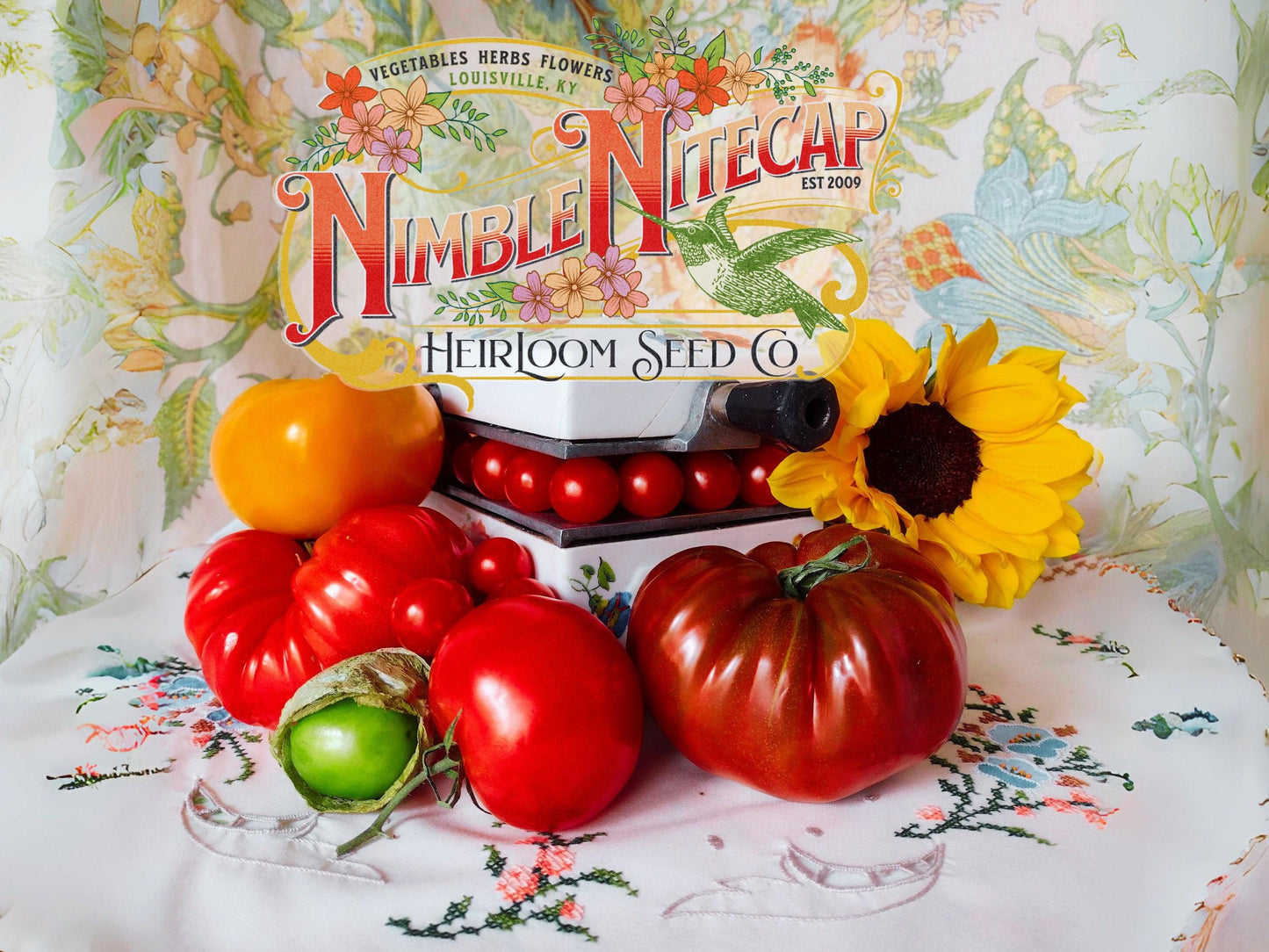An absolutely excellent heirloom tomato – firm, meaty, 3-inch oblong fruits with few seeds, on compact vines that are very productive. The Roma tomato, also called an Italian plum tomato, performs excellently for sauces because of its low water content. As a determinate type, most of the fruits ripen at the same time, which makes this tomato a good choice for canning. In areas with a long growing season, a second successive planting will double your harvest!
Tomatoes first arrived in Italy with the return of European explorers from South America, bringing with them the unknown "tomatl," a member of the nightshade family that was considered poisonous for centuries and only used for decoration. Though Italians didn't discover the merits of tomatoes as a vegetable until the 18th century, they quickly became a staple ingredient in Italian sauces and pasta. 80 days from transplanting. Determinate.
~ planting ~
When to start inside: RECOMMENDED. Start tomatoes indoors 6-8 weeks before the last frost of spring, sowing the seeds in a flat 1/4" deep and 1" apart. Keep the temperature at 70-75 degrees F until germination, as well as providing adequate light in a sunny window or under a grow light; keep the soil moist, but make sure drainage is adequate. When the second set of leaves emerges, transplant the seedlings into individual pots; bury the stems up to the lowest set of leaves to grow strongly rooted plants. A week before planting the seedlings outside, begin exposing them to the weather during the day to harden them; tomatoes cannot endure cold weather, and should not be transplanted outside until all threat of frost has passed. When the soil temperature reaches at least 70 degrees F, plant the seedlings in full sun and very rich soil; once more, bury the entire stem up to the lowest set of leaves. If providing a trellis, space the plants 2' apart, but if allowing the vines to spread, space the plants 3-4' apart.
When to sow outside: Recommended for mild winter climates only: 1 to 2 weeks before average last frost and when soil temperatures are at least 60° F.
~ growing ~
Tomatoes often perform best when provided with a trellis or support, since this protects them from various pests and diseases in connection with too much soil contact. Put the supports in place before the seedlings develop vines. As the vines begin to grow, tying them to the support helps their development. Since temperatures below 55 degrees F can damage production, protect the plants if temperatures drop. A thick layer of mulch helps conserve moisture and control weeds. Pruning the "suckers," or shoots that grow between the main stem and the branches, will greatly improve the production and strength of the plant.
~ harvesting ~
Harvest tomatoes when fully colored and firm. About 1 month before the average first fall frost, clip all blossoms and any undersized fruit off the plant. This will steer all the plant’s remaining energy into ripening what’s left. If you have a lot of green tomatoes near the end of the season, and a frost is approaching, pick them and store them indoors in a single layer away from direct sunlight to ripen.













